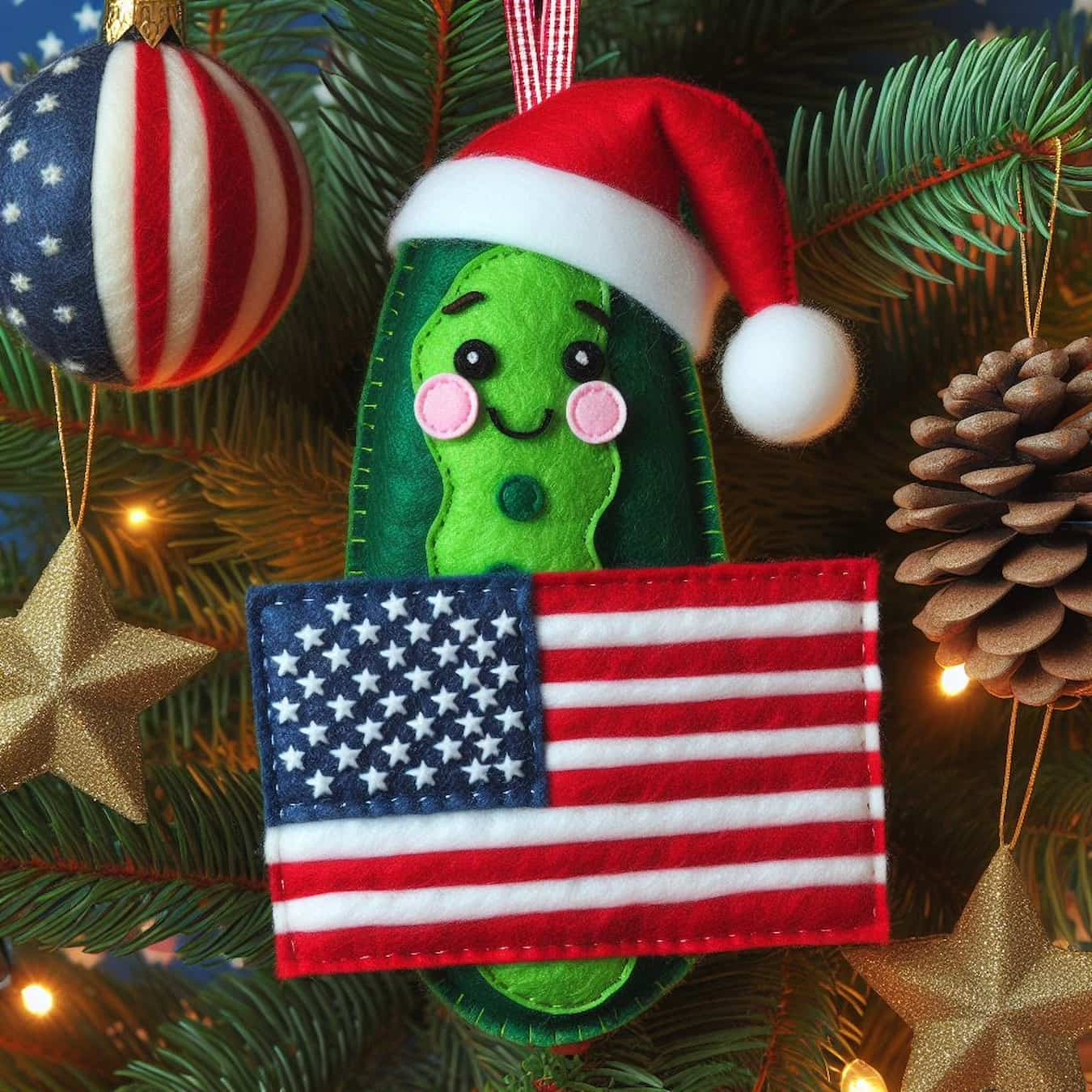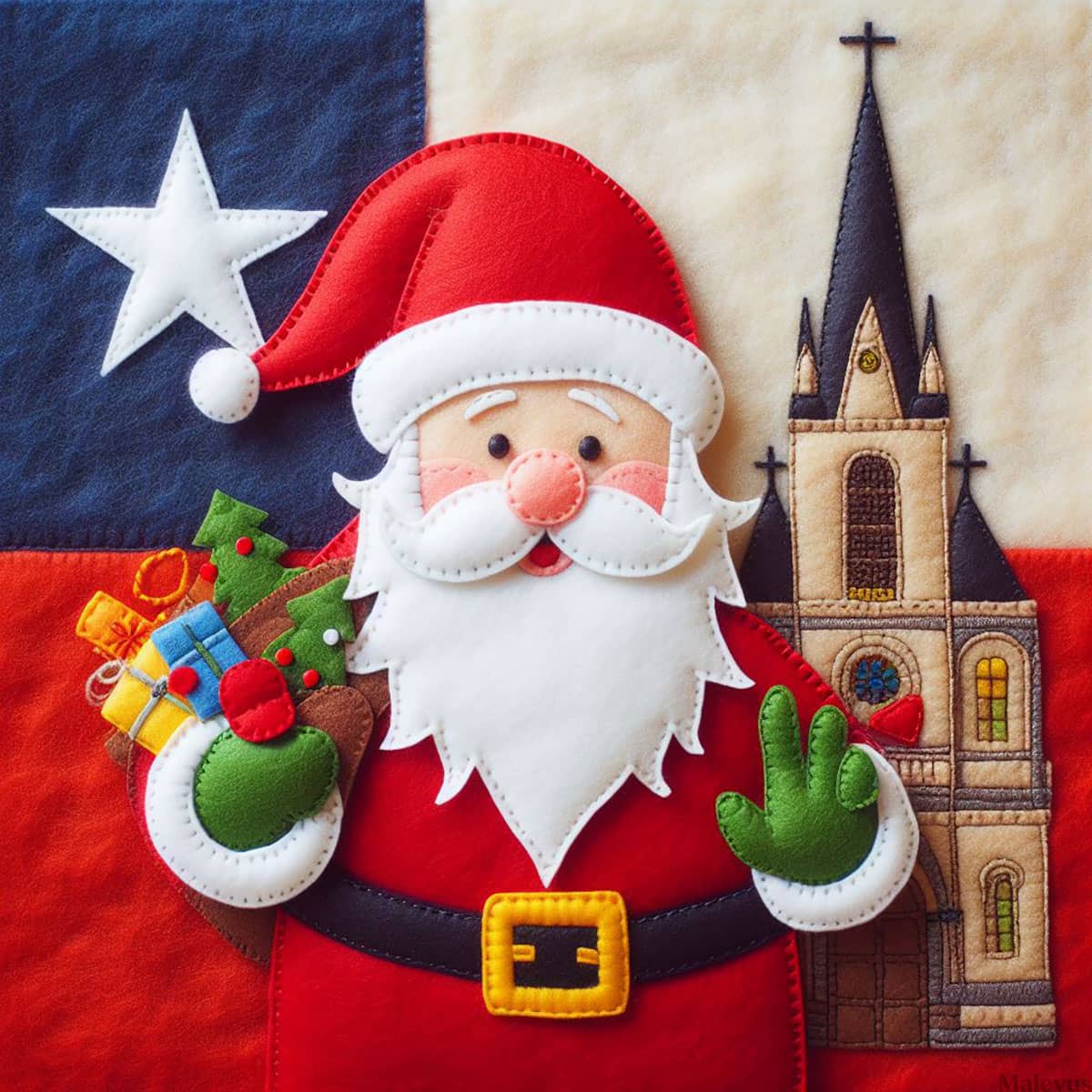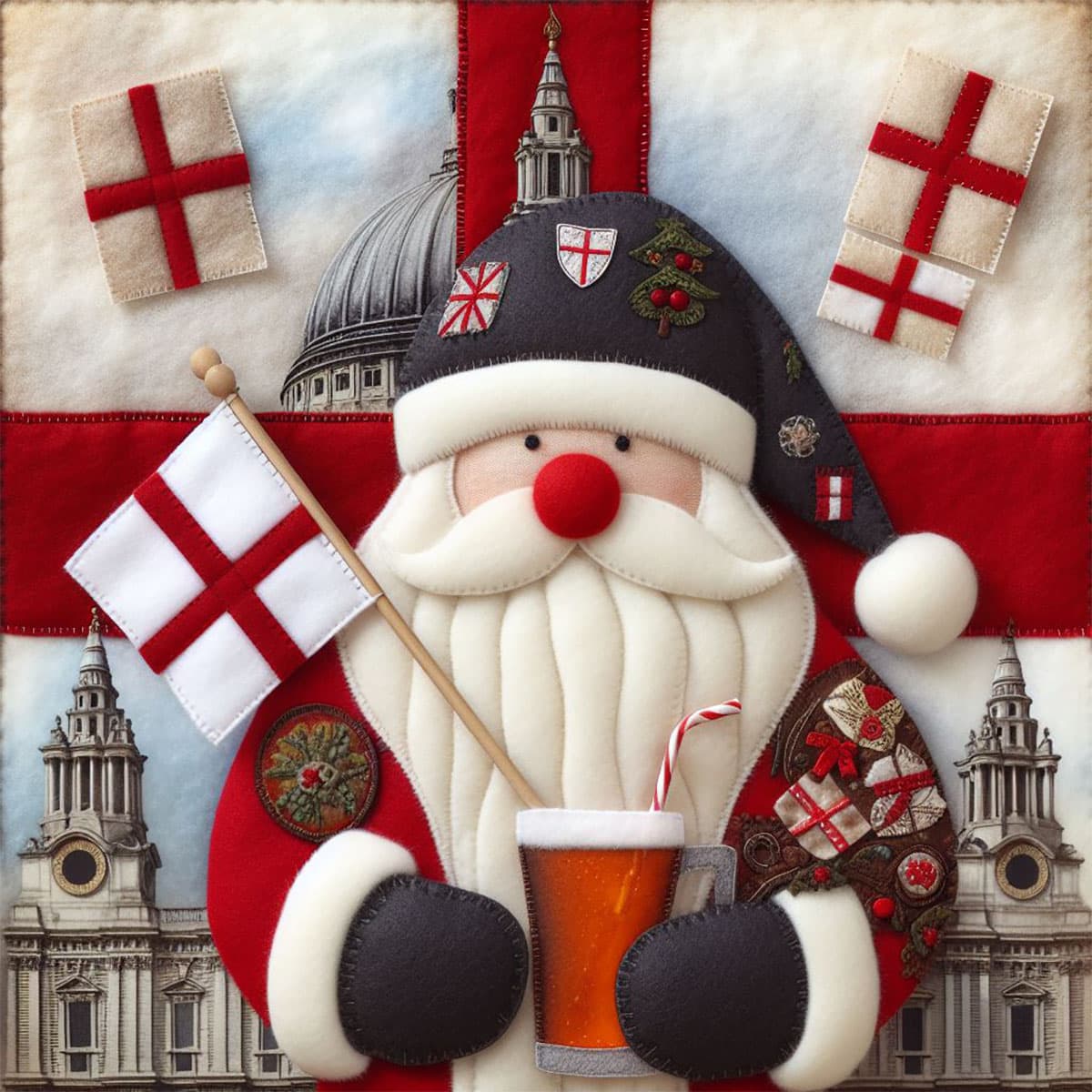The Christmas Pickle (in German Weihnachtsgurke) is a Christmas ornament shaped like a pickle. It is associated with an American tradition, supposedly of German origin, involving hiding this decoration in a Christmas tree. Whoever finds the pickle first on Christmas morning will be rewarded or blessed for the next year. The custom is believed to have originated in the late 19th century among German-Americans, although it is less recognized in Germany itself.
A Civil War soldier and St. Nicholas rescuing children from a pickle barrel are two of the main origin myths. Particularly in the United States, the Christmas pickle is still widely practiced today.
The Christmas Pickle Tradition
In the United States
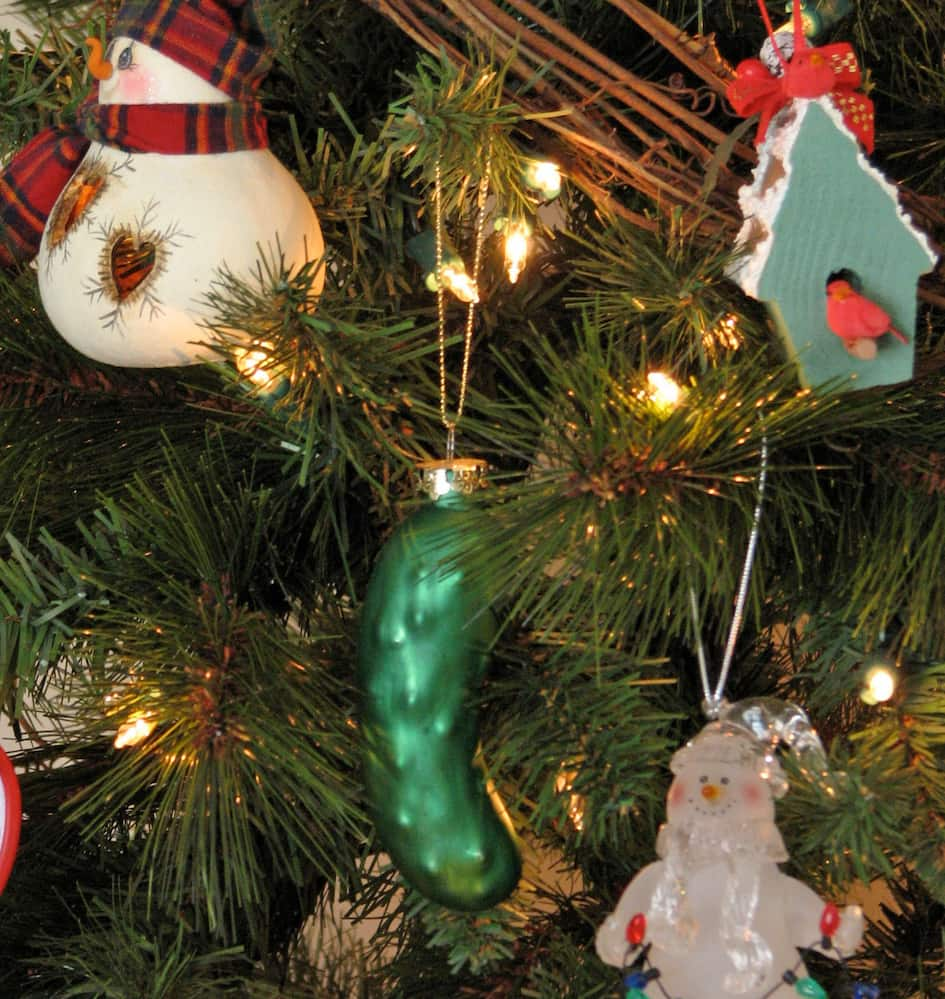
The tradition of the Christmas pickle is most prevalent in the American Midwest, where a significant number of residents have German origins. This decoration is always the last one placed on a decorated tree on Christmas Eve, so it’s hidden among the branches. Due to its green color, the pickle is not quite so easy to spot.
The first child to find it receives an additional gift, gets to unwrap presents first, and/or is believed to have good luck for the coming year. The glassblowers offer three different sizes to adapt the level of difficulty to the age of the children and the size of the tree.
You may get Christmas decorations in all sorts of strange forms, such as a fried egg, a beer mug, a pine cone, a ball, or a star, among many others. The city of Berrien Springs in Michigan self-proclaims as the “world capital of the Christmas pickle.” They hold a festival in early December, including a parade where fresh pickles are distributed.
In Germany
Contrary to popular belief in the United States, this tradition is not widespread in Germany. In a survey conducted by the international polling company YouGov, out of more than 2050 Germans surveyed, around 90% were not familiar with this tradition. Only 2 percent stated that they practice the tradition themselves.
The catalog of the Lyra Bicycle Works (Lyra-Fahrrad-Werke) from Prenzlau, Brandenburg, in 1909 includes a Christmas pickle in its range of Christmas decorations.
Whether the sporadic appearance of Christmas pickles in recent times in the German-speaking region is rooted in a nearly forgotten local tradition or an adoption from the United States remains unclear.
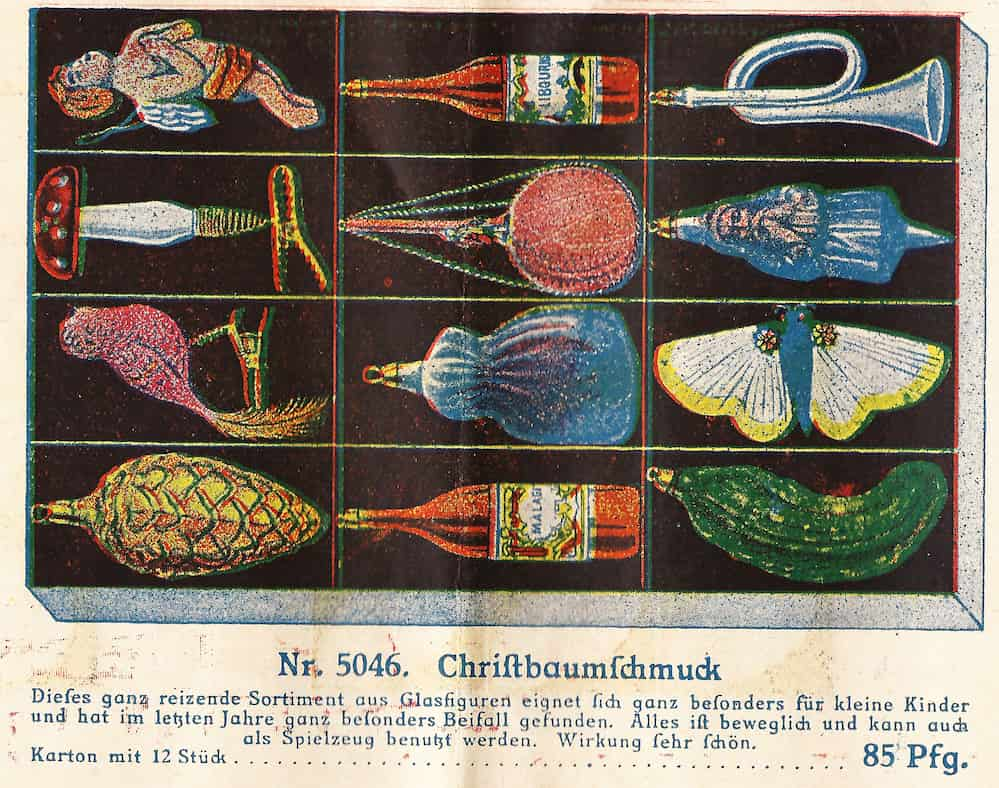
However, since the mid-2010s, the sale of pickle-shaped decorations has grown in Germany under the influence of the United States.
Supposed Origins of the Christmas Pickle
A Civil War Origin
Several hypotheses, more or less plausible, attempt to explain the origin of this supposedly German tradition. One popular explanation links the tradition to the story of a Bavarian-born soldier, John Lower (originally Hans Lauer), who fought for the Union during the American Civil War (1861–1865). Captured and imprisoned in 1864 in the Confederate camp of Andersonville, Georgia, he fell ill and, starving, begged his captors for food.
On Christmas Eve, while Lower faced starvation, he was saved by a guard who gave him a single pickle, as told in the narrative, to help him survive.
At the end of the war, liberated, he established the Christmas pickle tradition to remember this ordeal. He went back to his family and started a tradition of hanging a cucumber on the Christmas tree to honor his rescue. However, this version could not be authenticated.
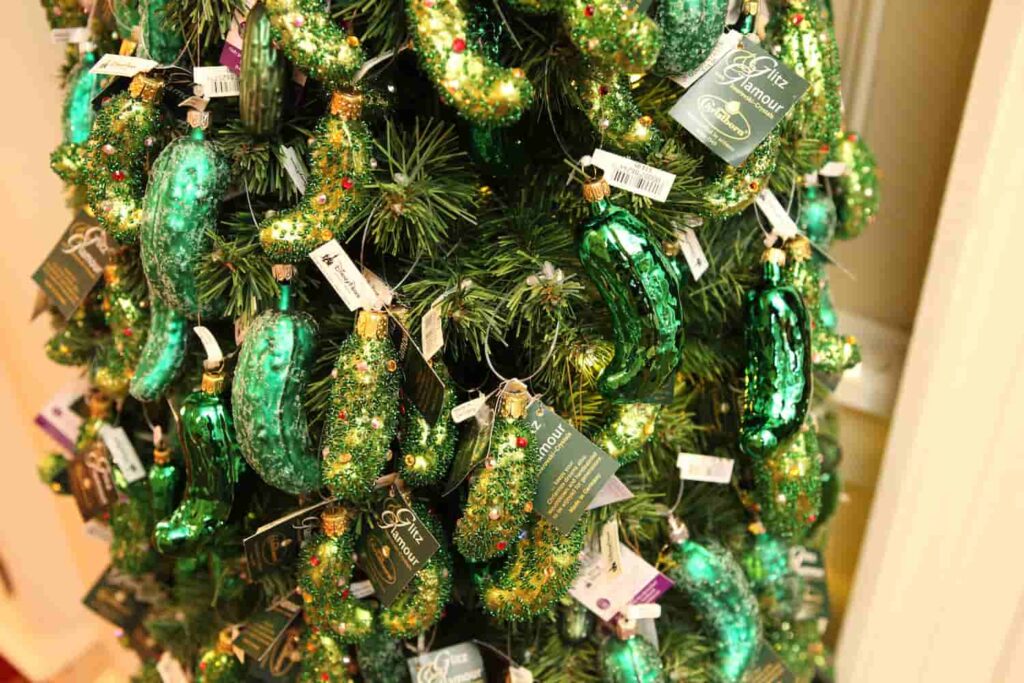
A Holy Legend
Three young Spaniards made a pit stop at an inn in a folktale from the Middle Ages. Nevertheless, the unscrupulous innkeeper pilfered their possessions and shoved the three of them inside a barrel of pickles. Also that night, St. Nicholas slept at this inn and noticed the lads in the pickle barrel and struck it with his lance to save them; however, the boys were dead. After that, he revived them, and ever since then, a pickled cucumber has been a traditional Christmas tree ornament to honor St. Nicholas.
A Marketing Ploy
Still another, and perhaps the most reasonable, explanation is that the whole Christmas pickle is an elaborate marketing hoax. German glassmakers from Thuringia supposedly started making cucumber and other fruit and nut decorations in the 1840s, as long as they were glass (Glasschmuck). They were exported to Europe and the United States, and some could have been shaped like pickles.
Frank Winfield Woolworth, founder of the American department store chain Woolworth, allegedly intended to bring this glass Christmas ornament to America and sell it in his shops beginning in 1880 after being impressed by it during a visit to Germany. He came up with an exciting tale of the German tradition of hanging pickles, and it was the ideal marketing move to boost sales of the freshly made Christmas pickle ornament.
This is a plausible explanation since Americans tend to associate any type of Christmas decoration with Germany. Until the late 19th century, Christmas celebrations and tree decorations were mainly reserved for wealthy English and German immigrants before being adopted more widely by the American population.
Poor People’s Tree Decoration
Dieter Dressler, a glass artist from Weimar, Germany, has an entirely new concept. Christmas pickles, he said in an interview with the “New York Times,” may have originated from a time when people in the Spreet Forest—a region known for its traditional cucumber cultivation and pickling—could not have afforded any other ornaments for their trees. And so it was that emigrants brought these memories with them to the United States.
As a Cheap Tree Decoration
Poor people are also the subject of another origin theory for Christmas pickle: Many early 20th-century families simply could not afford to buy a Christmas gift for every one of their children. According to legend, this is how the custom of hiding pickles in tree branches came to be: as a token of appreciation for the youngster who found them. For what reason was it a cucumber and not, say, a potato? This could be due to the fact that cucumbers were inexpensive and easy to pickle, resulting in their extended shelf life.


